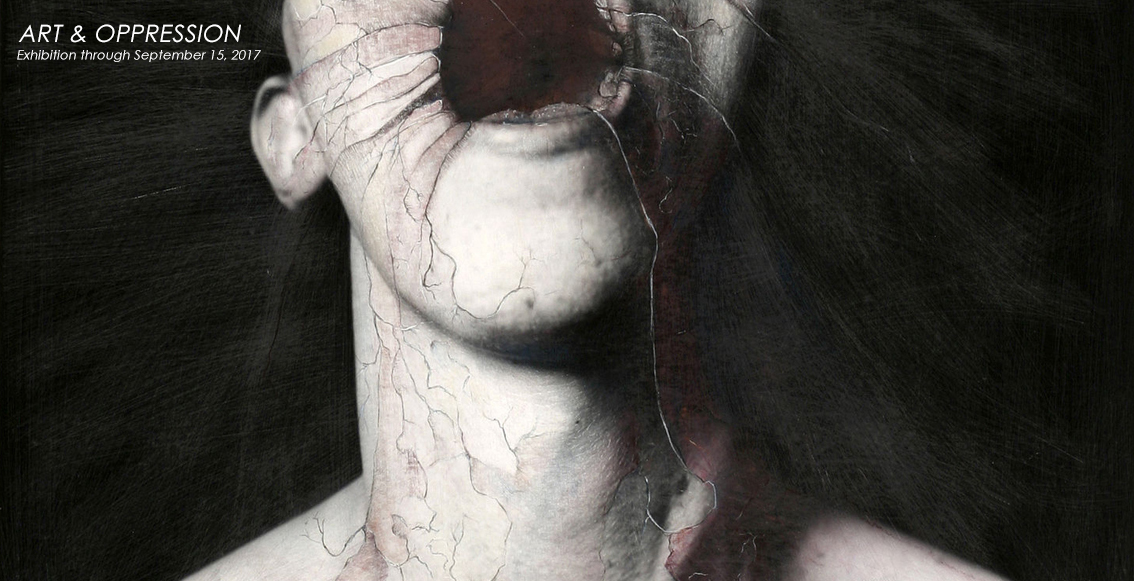CENTER - Art & Oppression


Art & Oppression: Artist's Statement
Wes Bell
Rapt
This series of photographs focuses on trees that have been used as supports for a variety of chains, cables, fasteners, or sections of fencing utilized to restrict access to the landowner’s property. Over time, as these trees continue to grow with these constricting bands of material, the dialectical tension between man and nature builds to a particularly emotional pitch by exposing the relentless nature of time. As the wires, cables and chains cut into the trunk of the trees restricting sap flow (a process literally called ‘strangulation’), the organic vegetal response seems to embody human, visceral feelings of pain, emotional constriction and dogged survival.
Entitled Rapt, this series of fifty-four photographs made in 2013 and 2016 opens the landscape into a series of tightly focused moments of intense engagement between man and nature. The sites I photographed spoke to me strongest in the days of transition from winter to spring when the scene was enveloped in flat, grey light and there was no foliage on the trees to distract from them.
All of the images were shot using black and white film in a medium square format camera. Given the focus of the subject matter on the various physical, material processes of decomposition, oxidation, and the organic workings of plant life, it was critical to the logic of the series to maintain the immediacy of their chemical, indexical imprint on the film, and its transition onto a slightly warm tone, semi-matte, fiber based paper used for gelatin silver prints, creating a substantial presence that would have been impossible to achieve digitally.
